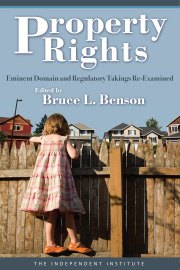Gov. Jerry Brown’s recent veto of Assembly Bill 1229, which authorized cities and counties to impose mandatory inclusionary zoning ordinances, sent a positive signal to the housing market and may help solve the housing shortage in California. Unfortunately some are still trying to modify a failing policy.
On Tuesday, the Sacramento County Board of Supervisors will consider revising its current inclusionary zoning ordinance, which requires builders to set aside a certain number of units at discounts for low-income families.
Passed in 2004, the policy has been a complete failure when compared to nearby surrounding jurisdictions. To cite one example: Sacramento County has produced only 263 subsidized units, compared to 1,528 units in less populated Elk Grove.
The current county program requires setting aside 15 percent of new housing for sale or rent at subsidized rates. County staff members concluded that the current ordinance was detrimental to the creation of market-rate housing, so they are now suggesting lowering the subsidy for new-home construction to 8 percent. Unfortunately, this rate is still higher than many other regional fees and will continue to place the county at a competitive disadvantage in producing new housing.
Inclusionary zoning is actually exclusionary because it raises housing prices and reduces the growth rate of new housing stock, making it more difficult and less affordable for individuals struggling to find housing in this area. The only winners are the few lucky lottery winners who get to purchase new units at subsidized rates.
Contrary to popular opinion, it is the homebuilder—and ultimately the new-home buyer—that bear the burden of this policy.
The ordinance is like a tax on new housing because it forces builders to sell some units at significantly lower prices or to pay an in-lieu fee, reducing overall revenues. The supply of new housing will decrease, causing prices to increase. Some potential buyers, facing higher prices, will go elsewhere and increase the demand and prices of homes in nearby cities or far flung “exurbs,” where the costs of development are lower. Overall prices rise and new home production falls, placing homes out of the reach of many middle-class families.
Politicians like inclusionary zoning because it allows them to raise taxes indirectly. It also allows them to point to a new “affordable” project in their jurisdiction to show off to their constituents. As a former city council member and mayor, I am aware of the allure to act like you are doing something to solve a problem. Unfortunately, this is a problem created by local politicians.
California law only requires that jurisdictions plan for their housing needs. There is no requirement to provide subsidized housing and create artificial housing shortages.
Recent court decisions have required municipalities to demonstrate that a reasonable nexus exists between new-housing development and the demand for subsidized housing. Many municipalities have hired consulting firms to provide such a nexus. Unfortunately, these studies are performed by consultants with backgrounds in urban planning and very little training in economics. As a result, these studies reflect a lack of clear economic thinking using established economic models. They suggest a market failure for subsidized housing because more housing means more demand for subsidized units. Their approach could easily be applied to the purchases of cars, food and clothing, requiring a tax on all newly produced goods. Not surprisingly, none of these studies have been vetted by academic economists or published in respectable economic journals.
If county residents want to support subsidized housing, there are less costly ways of doing so. Voucher programs, down-payment assistance, and other programs allow qualified low-income individuals the freedom to choose where to locate, the type of housing they prefer and the amount of housing they can afford.
Regardless, any solutions for providing subsidized housing should be paid by all taxpayers rather than singling out new homebuyers. If that approach (which would require a popular vote to authorize broad taxation) is too politically risky, at the very least the board should make certain that the cost of the revised Affordable Housing Ordinance is competitive within the Sacramento region.








